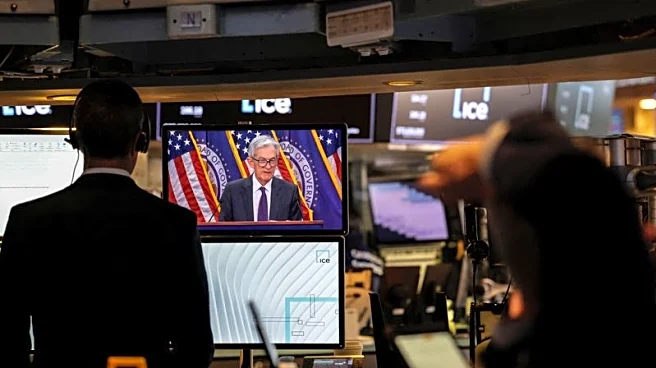What's Happening?
Gold prices fell on Thursday following a record peak in the previous session, as markets assessed the Federal Reserve's stance on interest rate cuts. Spot gold was down 0.6% at $3,638.33 per ounce, with U.S. gold futures for December delivery falling 1.3%. The Fed's recent rate cut, described as a risk-management measure, has introduced uncertainty regarding future policy adjustments. Despite the short-term decline, gold's long-term bullish trend remains intact, driven by diversification of dollar reserves by BRIC central banks and expectations of a lower dollar.
Why It's Important?
Gold's price movements are significant as they reflect investor sentiment and market reactions to monetary policy changes. The Fed's rate cut has implications for inflation and economic stability, influencing gold's appeal as a safe-haven asset. The diversification of dollar reserves by BRIC central banks supports gold prices, highlighting its role in global financial strategies. The current market dynamics underscore the importance of gold in investment portfolios, particularly during periods of economic uncertainty and low-interest rates.
What's Next?
Gold's future price trajectory will be influenced by the Fed's policy decisions and broader economic conditions. Continued diversification of dollar reserves by central banks is expected to support gold prices. The potential for further rate cuts and their impact on inflation will be key factors in shaping investor sentiment. Analysts anticipate that gold's long-term bullish trend will persist, with potential price objectives reaching $4,000 per ounce. Monitoring unemployment data and other economic indicators will provide insights into gold's market performance.











